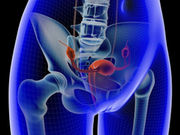From 2012 through 2013, hysterectomies were performed 65 times more often than embolization
MONDAY, March 6, 2017 (HealthDay News) — Embolization for uterine fibroids may be underused in U.S. hospitals, compared with surgery, according to research presented at the annual meeting of the Society of Interventional Radiology, held from March April 4 to 9 in Washington, D.C.
Prasoon Mohan, M.D., an assistant professor of interventional radiology at the University of Miami, and colleagues evaluated data from a national database on U.S. hospital stays.
Between 2007 and 2013, the annual number of women undergoing a hysterectomy for fibroids dropped by more than half: from 168,315 to 78,195. Still, the surgery remained far more common than embolization. For the years 2012 and 2013, there were 2,470 embolization procedures for fibroids, and 167,650 hysterectomies, the researchers found. When embolization was done, it was usually at a large medical center (67.4 percent). Overall, only 0.4 percent of all embolization procedures were done at rural hospitals, while 7.9 percent were performed in small hospital systems. On average, the investigators found, total hospital charges for embolization were $21,583, versus $33,104 for hysterectomy.
“These findings suggest there is a lack of awareness about this safe, effective, and less invasive therapy for uterine fibroids,” Mohan said in a news release from the Society of Interventional Radiology. “Interventional radiologists urge health care professionals to present patients with all available treatment options so that the patient can make an informed decision. Patients need to know about the major differences between surgical treatments and uterine fibroid embolization, especially that this is a non-surgical treatment that preserves the uterus and has a much faster recovery time compared to hysterectomy.”
Copyright © 2017 HealthDay. All rights reserved.








